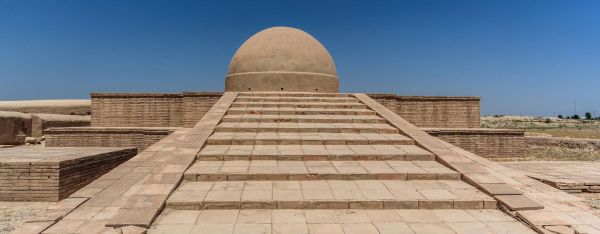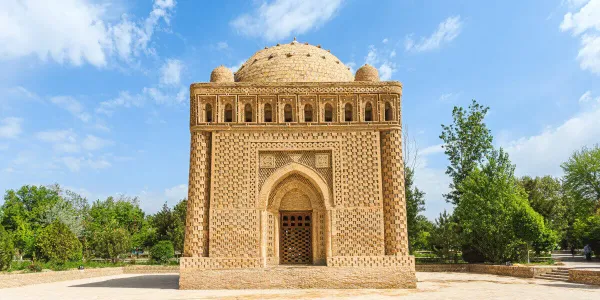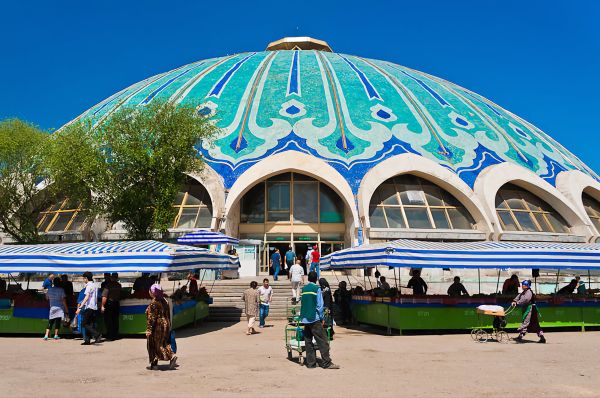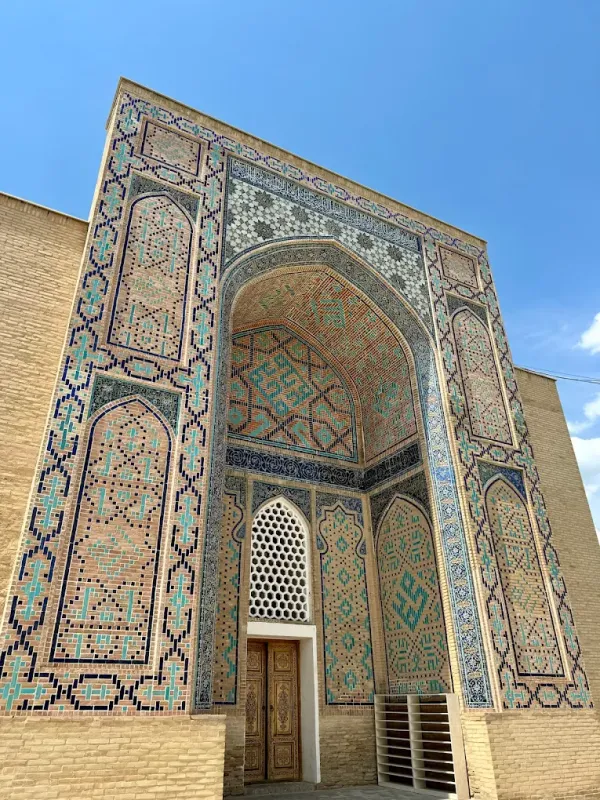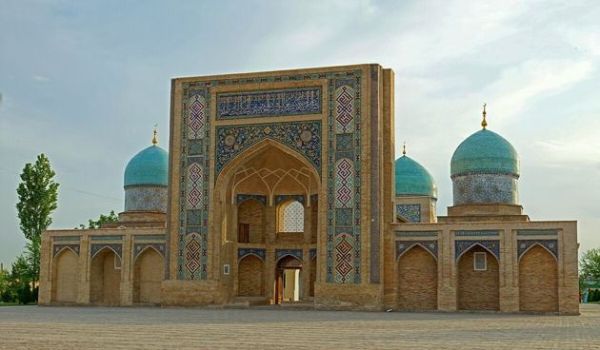Karatepa Buddhist Temple
Karatepa is a Buddhist place of worship built on three hills in the northwestern part of Old Termez. Karatepa includes several temples and monasteries that were built at the beginning of the II century A.D. The architecture of Karatepa stands out with a combination of caves made in sandstone and external buildings built of pakhsa and unfired brick. The interior of the temples were decorated with thematic drawings, ornaments on plaster and sculptures made of loess and clay. Marble-like limestone and carved plaster were widely used in the architectural decoration of temples.
The Karatepe center reached its peak in the II-III centuries. In the IV-V centuries, a significant part of the temples ceased to function. During this period, many caves were used as tombs and their entrances were bricked up. However, it is likely that some temples continued to exist as Buddhist places of worship until the sixth century. There is no reliable information that some Buddhist monasteries were destroyed by the Arabs. Although in order to get rid of pagan temples in Central Asia, the Arabs often levied special taxes on non-Muslim places of worship. This may have put an end to the functioning of Buddhist monuments in Termez and the surrounding areas. And it is likely that the monks who lived in the Buddhist monasteries of Termez went to Kashmir, where the Karkot dynasty ruled at that time, who were supporters of Buddhism. In the 8th-9th centuries, most of the population of Tokharstan adopted a new religion, Islam, which was spread by the Arabs. As a result, followers of other religions in this territory had to pay huge taxes. In the 9th-12th centuries, hermits, followers of Sufism, settled in dilapidated caves.
The walls of the Karatepa caves still contain numerous ancient drawings and inscriptions (in ancient Bactrian, Persian, Sogdian, Syriac, Arabic), which were made both during the heyday of Buddhism and during the period of decline.





